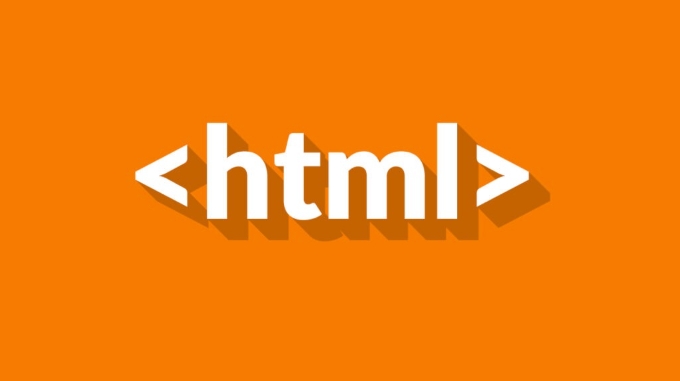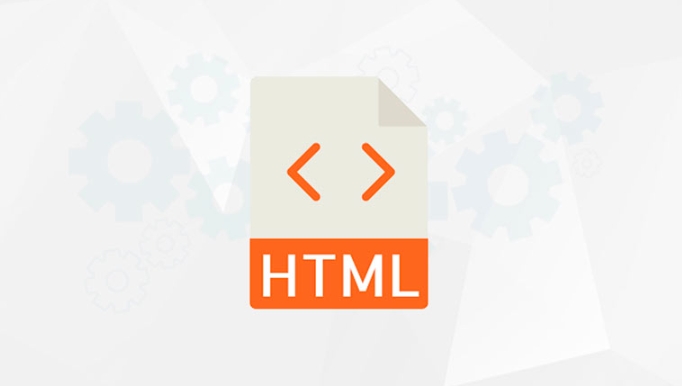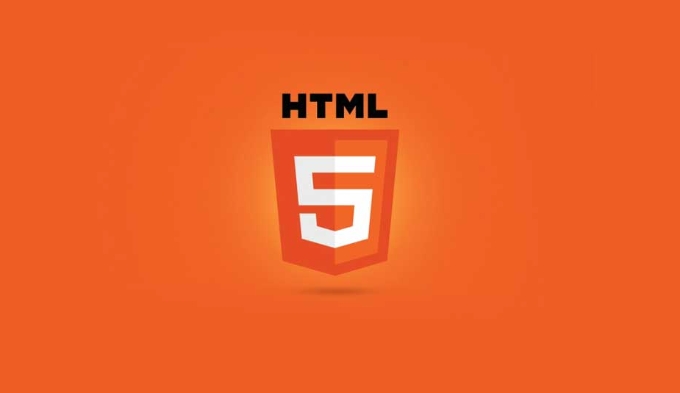Implementing client-side form validation using HTML attributes.
Jul 03, 2025 am 02:31 AMClient-side form validation can be done without JavaScript by using HTML attributes. 1) Use required to enforce mandatory fields. 2) Validate emails and URLs with type attributes like email or url, or use pattern with regex for custom formats. 3) Limit values using min, max, minlength, and maxlength. 4) Customize error messages with the Constraint Validation API, though these are limited and client-side only. Always validate data again on the server side for security and accuracy.

Client-side form validation is a key part of building user-friendly and secure web forms. The good news? You don’t always need JavaScript to do it. HTML has built-in attributes that let you validate basic user input right in the browser. Here’s how to use them effectively without overcomplicating things.

Use required for Mandatory Fields
The simplest and most common validation attribute is required. When added to an input field, it tells the browser that the user must fill it out before submitting the form.

For example:
<input type="text" name="username" required>
This works well for fields like names, emails, passwords — anything where leaving it blank would break the next step. Browsers will show a default message if someone tries to submit without filling it in.

Pro tip: Combine required with other attributes for stronger validation, like making sure an email looks like an actual email address.
Validate Email and URL Inputs with type and pattern
HTML5 introduced several input types like email, url, and number that automatically check if the format matches what's expected.
For instance:
<input type="email" name="email" required>
This ensures the user enters something that looks like an email (like user@example.com). Same goes for URLs. If you want even more control, like enforcing a specific format, use the pattern attribute with a regular expression.
Example:
<input type="text" name="zipcode" pattern="\d{5}" required>That line only accepts 5-digit ZIP codes. Keep in mind that while this is handy, regex can get tricky — test your patterns carefully.
Set Minimum and Maximum Values with min, max, and minlength / maxlength
Sometimes you need to limit how much or how little someone can enter. For numbers, dates, or text length, these attributes are your friends:
minandmaxwork on number and date inputsminlengthandmaxlengthset character limits on text-based inputs
Examples:
<input type="number" name="age" min="18" max="99"> <input type="text" name="username" minlength="3" maxlength="20">
These help prevent edge cases like absurdly long usernames or age values that don't make sense.
A few things to remember:
- These checks happen only on form submission.
- Users can still type invalid values, but the form won’t go through until they fix them.
Customize Error Messages (With Some Limitations)
By default, browsers show their own error messages when validation fails. But you can tweak those messages using JavaScript’s Constraint Validation API.
Here’s a quick way to change the message:
<input type="email" id="email" required>
<script>
const emailInput = document.getElementById('email');
emailInput.addEventListener('invalid', function(e) {
e.target.setCustomValidity('Please enter a valid email address.');
});
</script>Keep in mind that this doesn’t replace full validation — users can still bypass client-side checks entirely. So always double-check data on the server side too.
Basically, HTML form validation attributes give you a lot of power with minimal effort. They’re great for simple checks and improving the user experience without writing custom scripts. Just don’t rely on them alone for security or complex logic — that’s what backend validation is for.
The above is the detailed content of Implementing client-side form validation using HTML attributes.. For more information, please follow other related articles on the PHP Chinese website!

Hot AI Tools

Undress AI Tool
Undress images for free

Undresser.AI Undress
AI-powered app for creating realistic nude photos

AI Clothes Remover
Online AI tool for removing clothes from photos.

Clothoff.io
AI clothes remover

Video Face Swap
Swap faces in any video effortlessly with our completely free AI face swap tool!

Hot Article

Hot Tools

Notepad++7.3.1
Easy-to-use and free code editor

SublimeText3 Chinese version
Chinese version, very easy to use

Zend Studio 13.0.1
Powerful PHP integrated development environment

Dreamweaver CS6
Visual web development tools

SublimeText3 Mac version
God-level code editing software (SublimeText3)

Hot Topics
 How do I embed PHP code in an HTML file?
Jun 22, 2025 am 01:00 AM
How do I embed PHP code in an HTML file?
Jun 22, 2025 am 01:00 AM
You can embed PHP code into HTML files, but make sure that the file has an extension of .php so that the server can parse it correctly. Use standard tags to wrap PHP code, insert dynamic content anywhere in HTML. In addition, you can switch PHP and HTML multiple times in the same file to realize dynamic functions such as conditional rendering. Be sure to pay attention to the server configuration and syntax correctness to avoid problems caused by short labels, quotation mark errors or omitted end labels.
 How do I minimize the size of HTML files?
Jun 24, 2025 am 12:53 AM
How do I minimize the size of HTML files?
Jun 24, 2025 am 12:53 AM
To reduce the size of HTML files, you need to clean up redundant code, compress content, and optimize structure. 1. Delete unused tags, comments and extra blanks to reduce volume; 2. Move inline CSS and JavaScript to external files and merge multiple scripts or style blocks; 3. Simplify label syntax without affecting parsing, such as omitting optional closed tags or using short attributes; 4. After cleaning, enable server-side compression technologies such as Gzip or Brotli to further reduce the transmission volume. These steps can significantly improve page loading performance without sacrificing functionality.
 How has HTML evolved over time, and what are the key milestones in its history?
Jun 24, 2025 am 12:54 AM
How has HTML evolved over time, and what are the key milestones in its history?
Jun 24, 2025 am 12:54 AM
HTMLhasevolvedsignificantlysinceitscreationtomeetthegrowingdemandsofwebdevelopersandusers.Initiallyasimplemarkuplanguageforsharingdocuments,ithasundergonemajorupdates,includingHTML2.0,whichintroducedforms;HTML3.x,whichaddedvisualenhancementsandlayout
 What is the declaration, and what does it do?
Jun 24, 2025 am 12:57 AM
What is the declaration, and what does it do?
Jun 24, 2025 am 12:57 AM
Adeclarationisaformalstatementthatsomethingistrue,official,orrequired,usedtoclearlydefineorannounceanintent,fact,orrule.Itplaysakeyroleinprogrammingbydefiningvariablesandfunctions,inlegalcontextsbyreportingfactsunderoath,andindailylifebymakingintenti
 How do I use the element to represent the footer of a document or section?
Jun 25, 2025 am 12:57 AM
How do I use the element to represent the footer of a document or section?
Jun 25, 2025 am 12:57 AM
It is a semantic tag used in HTML5 to define the bottom of the page or content block, usually including copyright information, contact information or navigation links; it can be placed at the bottom of the page or nested in, etc. tags as the end of the block; when using it, you should pay attention to avoid repeated abuse and irrelevant content.
 How do I use the tabindex attribute to control the tab order of elements?
Jun 24, 2025 am 12:56 AM
How do I use the tabindex attribute to control the tab order of elements?
Jun 24, 2025 am 12:56 AM
ThetabindexattributecontrolshowelementsreceivefocusviatheTabkey,withthreemainvalues:tabindex="0"addsanelementtothenaturaltaborder,tabindex="-1"allowsprogrammaticfocusonly,andtabindex="n"(positivenumber)setsacustomtabbing
 What is the purpose of the input type='range'?
Jun 23, 2025 am 12:17 AM
What is the purpose of the input type='range'?
Jun 23, 2025 am 12:17 AM
inputtype="range" is used to create a slider control, allowing the user to select a value from a predefined range. 1. It is mainly suitable for scenes where values ??need to be selected intuitively, such as adjusting volume, brightness or scoring systems; 2. The basic structure includes min, max and step attributes, which set the minimum value, maximum value and step size respectively; 3. This value can be obtained and used in real time through JavaScript to improve the interactive experience; 4. It is recommended to display the current value and pay attention to accessibility and browser compatibility issues when using it.
 How do I use Laravel's validation system to validate form data?
Jun 22, 2025 pm 04:09 PM
How do I use Laravel's validation system to validate form data?
Jun 22, 2025 pm 04:09 PM
Laravelprovidesrobusttoolsforvalidatingformdata.1.Basicvalidationcanbedoneusingthevalidate()methodincontrollers,ensuringfieldsmeetcriterialikerequired,maxlength,oruniquevalues.2.Forcomplexscenarios,formrequestsencapsulatevalidationlogicintodedicatedc






